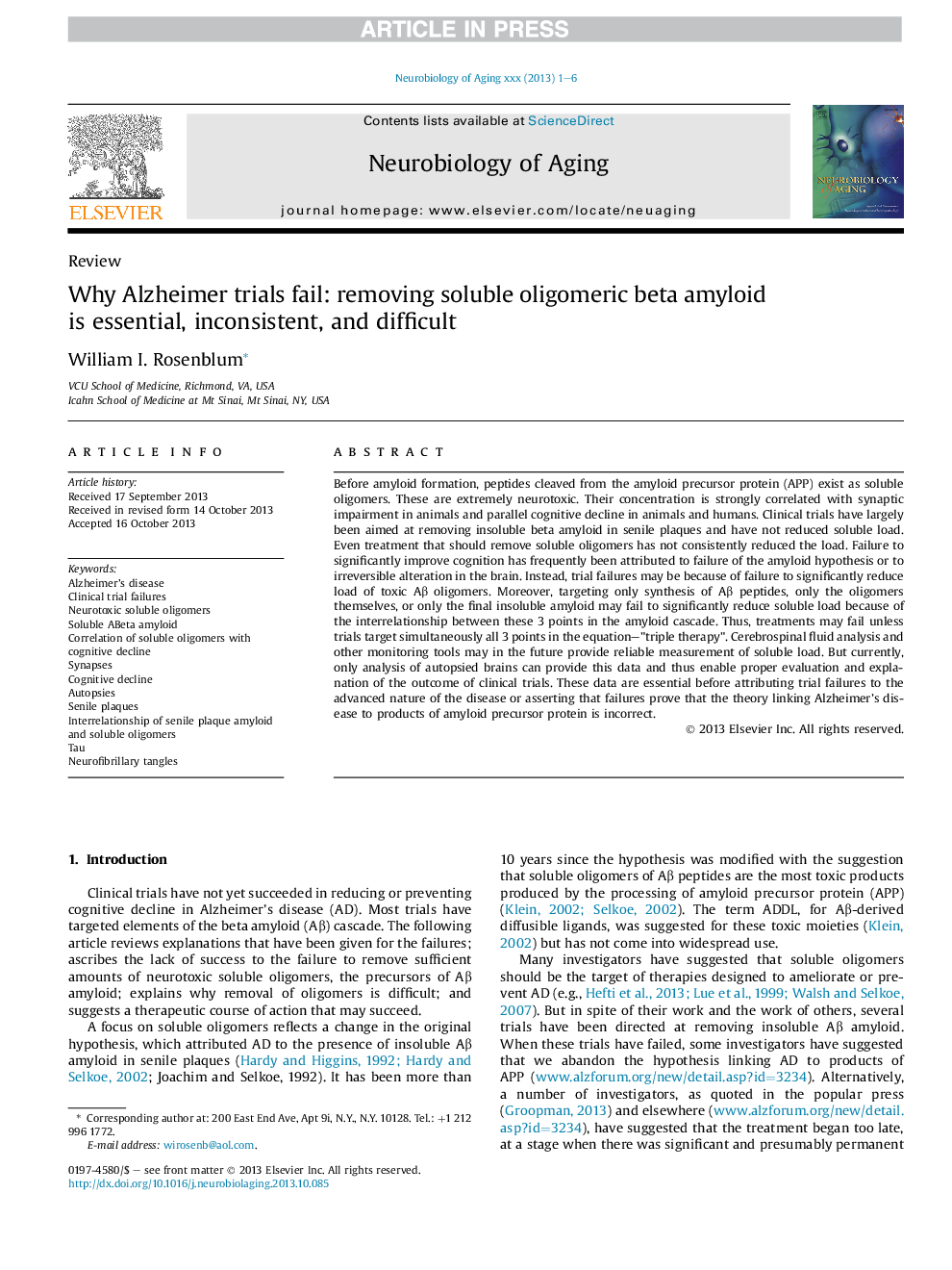| Article ID | Journal | Published Year | Pages | File Type |
|---|---|---|---|---|
| 6805974 | Neurobiology of Aging | 2014 | 6 Pages |
Abstract
Before amyloid formation, peptides cleaved from the amyloid precursor protein (APP) exist as soluble oligomers. These are extremely neurotoxic. Their concentration is strongly correlated with synaptic impairment in animals and parallel cognitive decline in animals and humans. Clinical trials have largely been aimed at removing insoluble beta amyloid in senile plaques and have not reduced soluble load. Even treatment that should remove soluble oligomers has not consistently reduced the load. Failure to significantly improve cognition has frequently been attributed to failure of the amyloid hypothesis or to irreversible alteration in the brain. Instead, trial failures may be because of failure to significantly reduce load of toxic Aβ oligomers. Moreover, targeting only synthesis of Aβ peptides, only the oligomers themselves, or only the final insoluble amyloid may fail to significantly reduce soluble load because of the interrelationship between these 3 points in the amyloid cascade. Thus, treatments may fail unless trials target simultaneously all 3 points in the equation-"triple therapy". Cerebrospinal fluid analysis and other monitoring tools may in the future provide reliable measurement of soluble load. But currently, only analysis of autopsied brains can provide this data and thus enable proper evaluation and explanation of the outcome of clinical trials. These data are essential before attributing trial failures to the advanced nature of the disease or asserting that failures prove that the theory linking Alzheimer's disease to products of amyloid precursor protein is incorrect.
Keywords
Related Topics
Life Sciences
Biochemistry, Genetics and Molecular Biology
Ageing
Authors
William I. Rosenblum,
